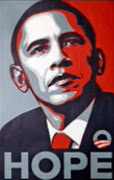Friday Forays In Fiction: Teachers
 I've been spending a lot of time with this book in the last two weeks. I first checked it out last spring when I was still at my mom's in Longview. I mostly browsed in it at that time. I might have got serious with it if I had discovered our system down here didn't have it but once I knew I had access once home, I relaxed about it.
I've been spending a lot of time with this book in the last two weeks. I first checked it out last spring when I was still at my mom's in Longview. I mostly browsed in it at that time. I might have got serious with it if I had discovered our system down here didn't have it but once I knew I had access once home, I relaxed about it.
The Weekend Novelist
by Robert J. Ray
(c) 1994
265p
I'm going to drop the contents page here because it will save me a lot of explanation.
CONTENTS
PART I Getting Started
How to Use This Book
Warming Up
Writing Tips
PART II Character Work
Where to Start
Weekend 1 -Character Sketch
Weekend 2 - Back Story
Weekend 3 - Dream
Weekend 4 - Wardrobe: Dressing Your Character
Closing Thoughts
PART III Scene Building
Weekend 5 - Scene Analysis/Scene Sketch
Weekend 6 - Stage Setup
Weekend 7 - Dialogue
Weekend 8 - Action
Weekend 9 - Point of View
Weekend 10 - Building Chapters
Closing Thoughts
PART IV Plotting
Weekend 11 - Key Scenes
Weekend 12 - Aristotle's Incline
Weekend 13 - Story Line
Weekend 14 - Scenario
Closing Thoughts
PART V Writing Your Key Scenes
Weekend 15 - Writing Your Opening scene
Weekend 16 - Writing Your Wrap-up Scene
Weekend 17 - Writing Your Catharsis Scene
Weekend 18 - Writing Your Scene at Midpoint
Weekend 19 - Writing the Scene at Plot Point One
Weekend 20 - Writing the Scene at Plot Point Two
Closing Thoughts
PART VI Writing the Discovery Draft
Weekends 21-23 - Act One
Weekends 24-28 - Act Two
Weekends 29-31 - Act Three
PART VII Writing the Meditation Draft
Weekends 32-34 - Deepening Key Scenes
Weekends 35-45 - Acts One, Two, and three
Weekends 35-37 - Act One
Weekends 38-42 - Act Two
Weekends 43-45 - Act Three
Closing Thoughts
PART VIII Writing the Final Draft
Weekend 46- Reading
Weekend 47 - Cutting
Weekends 48-51 - Rewriting
Weekend 52 - Editing
Closing Thoughts
Appendix: Finding a Publisher
Glossary
Bibliography
I am considering adapting Robert J. Ray's method for my NaNoWriMo novel this year. The advice in it has already proven itself helpful in solving a problem or two among my WIP and I'm curious what I could do with it with a fresh project.
Ray divides all the tasks of writing a novel up into a series of goals that are reachable with two writing sessions per weekend over 52 weekends. But the first 14 weekends are prep work and the weekends after the 31st are post 1st draft. So that leaves only weekends 15-31 as the actually writing of the first draft. Counting each weekend as two days that makes 34 days. Close enough. Especially considering you aren't required to have a complete draft only 50K in words.
But what I like about this concept is the possibility of actually having a serviceable first draft at the end of those 30 frantic NaNo days. Instead of the massive mess of words I ended up with the last four times. The messes in those files are so daunting I've barely touched them since the day their NaNos ended. Which is making me think hard about even participating this year because I would hate to 'throw away' another good story concept by turning it into another morass of words.
Another thing I like about Ray's program is that it looks possible for me to apply it to each of my WIP, including the previous NaNo novels. And since I'm not limited to weekends unless I choose to be, I can think of those 52 weekends as 104 days. That's a tad over three months. Which means I could if I chose bring up to four WIP from mess to manageable, even magnificent, in a year of concentrated effort.
The aspect of his program that I'm the most energized about is how he guides you into mapping out several of the most crucial scenes on the plot line and has you write them early. These are the scenes that are the core of the story. The first, the last, the climax and something he calls plot points 1 and 2. I'm hoping that learning how to do this might solve one of my most intractable problems to date: Getting past the middle hump of the story.
I've seen other advice using similar charts showing the plot development of stories but they always seemed like recipes for hack writing. Ray manages to show how even a literary novel can be mapped out so that you know all of the crucial scenes and how you intend to move through them to the resolution. He seems to prove that this can only improve the quality of the story. The technique that helps take your story out of formula into art is the second pass through called the meditation draft.
I haven't read that chapter yet and have only picked up hints as to what it is all about so I'm not going to try to explain it in this post. I'm sure I'll be having more to say about his book in the next few weeks.












0 tell me a story:
Post a Comment